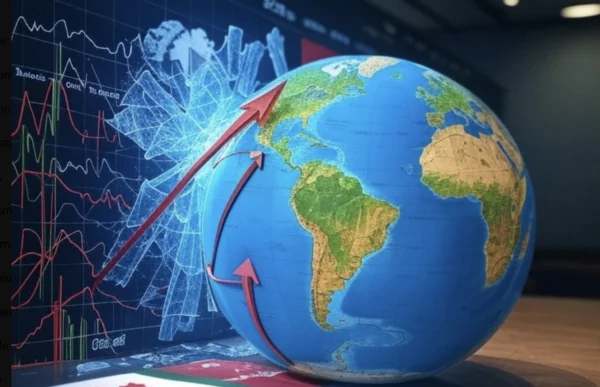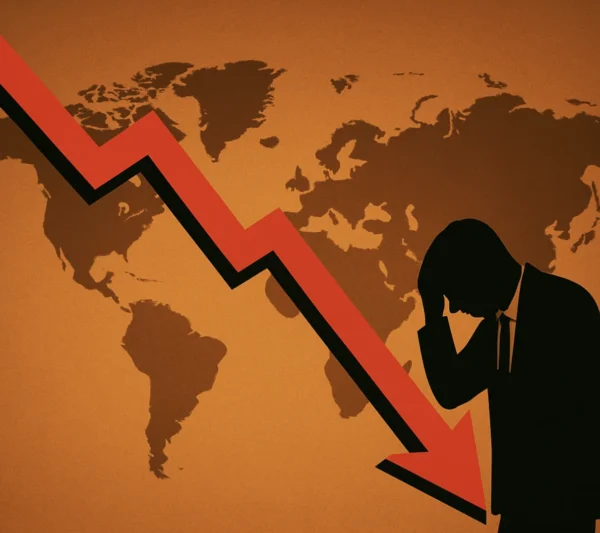
Discover how President Trump’s 2025 tariffs triggered global retaliation, recession fears, and sharp stock market declines. A detailed overview of country responses and financial impacts.
US President Donald J. Trump declared a national emergency under the International Emergency Economic Powers Act (IEEPA) on April 2, 2025, instituting a 10% baseline tariff on all imports effective April 5, 2025, with higher reciprocal tariffs—ranging from 11% to 50%—targeting 57 countries with significant trade surpluses or perceived nonreciprocal trade practices. This policy, aimed at addressing persistent US trade deficits and reviving US domestic manufacturing, has triggered swift global reactions and retaliatory actions.
Confirmed Retaliatory Tariffs as of April 5, 2025
China
- Tariff Rate: 34% on US imports (additional to the existing 20%, totalling 54%)
- Effective Date: April 10, 2025
- Additional Measures: China has signalled expanded export restrictions on rare earths and blacklisting of US companies, though only 16 firms were confirmed blacklisted earlier in 2025 (pre-April tariffs). No new blacklist expansions are confirmed as of April 5, but state media suggests further measures are imminent.
European Union (EU)
- The reimposition of Suspended Tariffs: Up to 50% on select US-origin products was threatened earlier but not yet enacted; current measures focus on new tariffs.
- New Tariff Package: Targets €18 billion in US goods (steel, aluminum, textiles, agriculture).
- Timeline: Stakeholder consultations concluded on March 26, 2025; final adoption is expected in mid-April 2025, though no firm date has been set. The EU is finalizing a “robust” response package, per European Commission President Ursula von der Leyen.
Canada
- Tariff Rate: 25% on US-origin goods
- Effective Date: March 4, 2025
- Scope: Initial $30 billion in tariffs on US goods, with plans to expand to $155 billion ($30 billion initial + $125 billion additional) pending US stance.
- Additional Measures: Consultations for the second round ($125 billion) concluded around March 25, 2025, with implementation delayed to April 2, 2025. As of April 5, the expansion remains paused, awaiting US tariff escalation.
Mexico
- Tariff Rate: 25% on US-origin goods
- Effective Date: March 4, 2025 (not April 9, as initially misstated)
- Scope: $30 billion in initial tariffs on US goods; further product categories are under review but not yet specified as of April 5, 2025.
- Correction Note: The April 9, 2025, date likely conflates Mexico’s response with the US’ broader reciprocal tariff rollout. Mexico’s tariffs began March 4, aligned with US tariffs on Mexican goods.
Country-by-Country Reactions
Asia
- Japan: Prime Minister Shigeru Ishiba called the US tariffs a “national crisis,” with a 24% reciprocal tariff looming by April 9. Japan is seeking exemptions via negotiations, avoiding immediate retaliation, though exporters like Toyota brace for higher costs.
- South Korea: Facing a 25% US tariff (April 9), Acting President Han Duck-soo pledged an “all-out” response, including subsidies for semiconductors and auto parts sectors. No retaliatory tariffs are confirmed yet.
- India: A 27% US tariff is set for April 9. India’s Department of Commerce is assessing options, with potential retaliation targeting US tech and pharma imports, though no firm measures are announced.
- Vietnam: Hit with a 46% US tariff (April 9), its currency has weakened significantly. Emergency economic measures are underway, but no specific retaliatory tariffs are confirmed.
European Union (cont.)
- Germany: Supports the EU’s retaliatory stance, with its automotive sector (e.g., BMW, Volkswagen) at high risk from US tariffs (20% on EU goods, effective April 9).
- France: Pushing for digital taxes on US tech giants (e.g., Google, Apple) within the EU response, though no unilateral action is confirmed.
- United Kingdom: Faces only the 10% baseline tariff (April 5), not higher reciprocal rates. The UK is avoiding retaliation, but growth forecasts may be downgraded, per Chancellor Jonathan Reynolds.
Potential Recessionary Consequences
- Global Outlook: J.P. Morgan raised global recession odds to 60% for 2025 (up from 40%), citing trade disruptions. Germany faces stagnation risks, while Canada and Vietnam could see slowdowns from reduced US demand.
- Impact on US: Goldman Sachs pegged US recession odds at 35% within 12 months (notably lower than global estimates). Fitch Ratings warned of reduced output from shrinking consumer spending. The S&P 500 is down roughly 12% from its February 2025 peak, nearing correction territory (10%+ drop).
Impact on US Companies
- Retailers: Best Buy and Nike face rising import costs, though specific impacts are unquantified as of April 5.
- Manufacturing: Aluminum users (e.g., automakers) are squeezed by prior steel/aluminum tariffs (25% since March) and new baseline tariffs.
- Airlines: Delta Air Lines cut Q1 2025 profit forecasts by 50%, with shares dropping 14%, tied to fuel and operational cost pressures exacerbated by trade uncertainty.
- Market Reaction: On April 3, the S&P 500 fell 4.8% ($2.4 trillion lost), the worst day since June 2020. The Nasdaq dropped 6%, with Apple (-9.3%) and Nvidia also hit hard. Barclays predicts a 2.8% earnings hit for S&P 500 firms from tariffs.
Impact on Investor Wealth
- Over $4 trillion in S&P 500 market value has been erased since February 2025. The top 10% of US wealth-holders (owning 87% of equities) took the largest hit, though retail investors are also reeling from broader market declines.
As of April 5, 2025, global reactions to President Trump’s tariffs have solidified into concrete retaliatory measures from China, Canada, the EU, and Mexico, with others like Japan and South Korea preparing responses. The risk of a synchronized global downturn is rising, evidenced by Wall Street’s sharp declines and Main Street’s looming cost pressures. With the US’ higher reciprocal tariffs set to begin April 9, and more announcements possible, policymakers and businesses face escalating uncertainty in trade, investment, and consumption.






